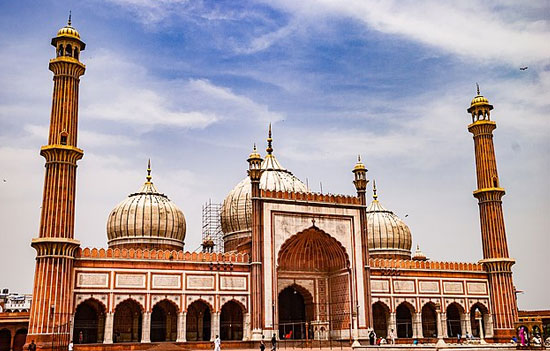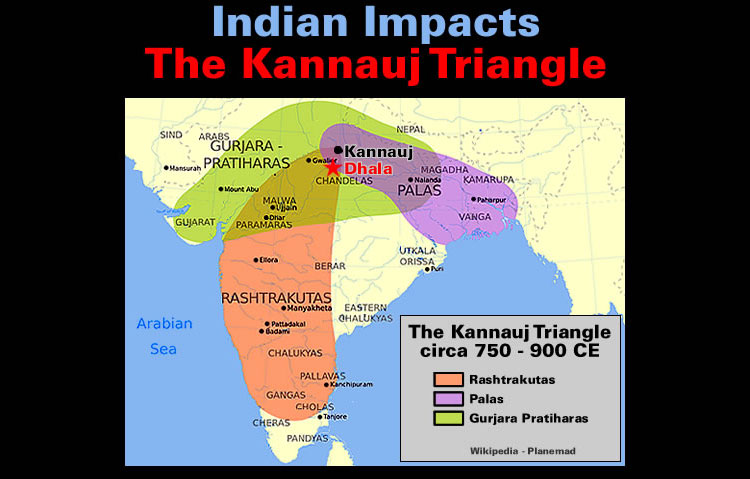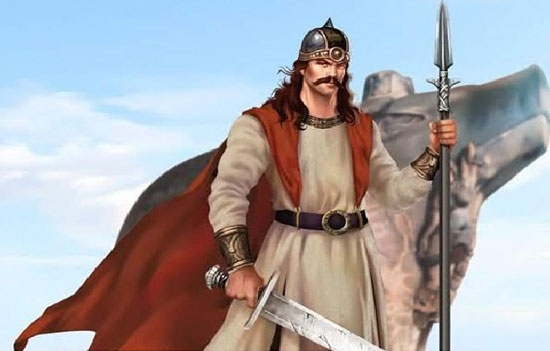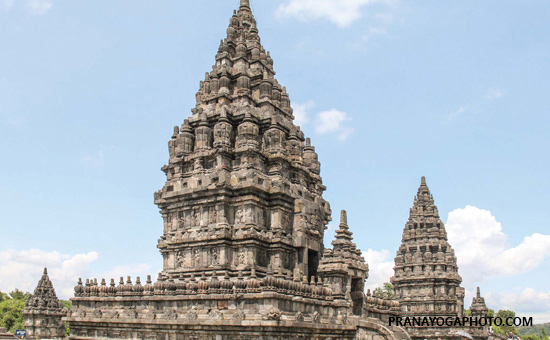- Precis covers 700 to 1000 A.D. & includes Age of Strength & Achievement, The Big Three Empires, Arab Invasions, Battle for Kanauj (India’s cultural capital) Impact of Hunas invasions, The Age of Unity and Mihir Bhoja, Views of Medhatithi, a political sage and Status of Women. Very informative.
Shri
V Balachandran (ex-Special Secretary Cabinet Secretariat) wrote in The Tribune
Chandigarh Neglecting
cultural czar Munshi’s efforts This goaded me to do a precis of
Foreword of 11 Volumes of The History and Culture of Indian People. The books
are a masterpiece & my constant reference book
Shri K
M Munshi was an educationist, freedom fighter, founder of Bharatiya
Vidya Bhavan (1938), author and worked closely with Sardar Patel. He initiated
the writing of The History and Culture of
the Indian People. Shri R.C. Majumdar was General Editor. A.K. Majumdar and
A.D. Pusalker were Assistant Editors of Vol 4. It was first published in 1955, fourth
edition in 1993.
K
M Munshiji said, “That although efforts to prepare this massive history-writing
had started in 1938, it could assume concrete shape only in 1944 with generous
help from GD Birla and the Shri Krishnarpan Charity Trust.”
Precis
is split in parts. Each part has a number and title that represents content.
Let us hope these books become part of the mainstream educational system.
Period
700 to 1000. Volume title is The Age of
Imperial Kanauj. It includes Age of Strength & Achievement, Big Three
Empires, Arab Invasions, Battle for Kanauj (India’s cultural capital) Impact of
Hunas invasions, Age of Unity and Mihir Bhoja, Views of Medhatithi, a political
sage and Status of Women.
Period
1000-1300
includes state of Indian society around 1000, why did it survive the earlier
2,000 years, status of Sanskrit, social impact of Muslim invasions, why lower
strata of society adopted Islam, South Indian kings, rise of Desabhashas and
Bhakti.
Period
1300 to 1526
includes did Khilji/Tughluq rule all of India, Timur invasion, what is common
between Timur and Vasco da gama, Religious Life then, Impact of Islam, Religious
life and Language Literature and did Muslim or Hindu ruler of Orissa support Chaitanya
Mahaprabhu.
Period
1526-1707
includes Mughal rule esp. intolerance towards Hindus, warrior Hemu and Tansen.
Period
1707 to 1818
includes Political situation post Aurangzeb and rise of the Marathas, Changes
due to influence of Western World and Economic exploitation of India by British.
Period
1818 to 1905 (Part 1) includes Characteristics of British rule,
History from a British standpoint/Famines-Poverty, Was British Empire in India
an accident and three events that require attention.
Period
1818 to 1905 (Part 2) includes Hindu Muslim relations in the 19th
century, changes in religious and social ideas, growth of new types of
literature, rise of the Press and state of slavery and semi-slavery of Indians.
Period
1905 to 1947
includes the purpose of history, why was Pakistan created, creation and
Sub-nation States and Linguistic chauvinism, Hindu Muslim riots 1918 to 1927
and Hindu Muslim Pact 1923.
My
only contribution is doing a precis of the foreword. This piece is courtesy the
publisher Bharatiya Vidya Bhavan Mumbai.
The Age of Imperial Kanauj 700 to 1000 A.D.-Foreword by Dr. K M Munshi
I Age of Strength and Achievement-3 Great Empires
The
Age begins with Arab invasions on mainland India at start of the 8th
century and ends with 997 A.D. when Afghanistan passed into the hands of the
Turks. At the turn of its last century Mahmud and Sabuktigin came to power in
Ghazni. Till the rise of Hindu power in Maharashtra in the 18th
century, India was to pass through a period of collective resistance.
This
age of Imperial Kanauj, was an era of great strength and achievement for India.
The Arabs were repulsed. The Tibetan power was eliminated from Nepal. The South
emerged effectively, in the political life of India, as it has emerged in the
earlier age in its religious and cultural life.
This
age saw the rise of 3 great Empires i.e. Rashtrakutas (founded by Santidurga
(733-757), Krishna I (657-773) which dominated the South till its collapse in
974), Palas in the East (which saw its zenith under Dharampala (770-810) and
Pratiharas of the West and North (founded by Nagabhata I which saw its zenith
during reigns of Mihira Bhoja (836-895) and Mahendrapala (885-908).
II Battle for Kanauj, India’s most influential centre of culture
It
was the age of Kanauj or Kanyakubja, which dominated Madhyadesa, the heartland
of India. It was the ultimate prize of 3 powers racing for all India supremacy.
Eventually passed into hands of the Pratihara Gurjararesvaras about 815,
remained the metropolis of power till 950 and continued to be the most
influential centre of culture till 1018 when it was destroyed by Mahmud of
Ghazni.
 Jama
Masjid Kanauj said to be built from ruins of a temple.
Jama
Masjid Kanauj said to be built from ruins of a temple.
It
was the capital of the powerful Aryan kingdom, Vatsaraja was its ruler. It
remained capital till the end of the 6th century. Then North India
was overrun by the Hunas. When Isanavarman drove out the Hunas, Kanauj came
into prominence, as the centre of power of Madhyadesa.
In
the 7th century, the Kings of Bengal and Malava, destroyed the power
of Kanauj. On the ruins of the Maukhari kingdom, Sri Harsha (606-657) built his
empire. During his 42 years rule Kanauj grew into the foremost city of India.
His empire was dissolved after he died.
After
about half a century Yasovarman, a great conqueror is found ruling Kanauj. The
Classical Age of India ends with the reign of Yasovarman (Lalitaditya of
Kashmir destroyed the power of Yasovarman). This Age then opened with one
Indrayudha on the throne of Kanuaj. The stage was now set for the Big Three to contest
for Kanauj.
III Big Three Empires and about Arab invasions
The
first great conqueror to emerge with the Age was Rashtrakuta Dantidurga, who
became the master of the whole of Maharashtra by 753. He was succeeded by his
uncle Krishna I who built the Kailasa temple at Ellora & in 15 years added
modern states of Hyderabad and Mysore to his empire.
 Areas ruled by the Big Three Empires.
Areas ruled by the Big Three Empires.
In
the east, Dharmapala (770-810) led his conquering army through the whole valley
of the Ganga, held courts at Kanauj and Pataliputra. For long he commanded
allegiance of most kings of the north.
In
712 the Arabs conquered Sindh. About 725 its
governor Junaid overran Saurashtra, Abu region and reached Ujjain. An unknown
hero Nagabhata rose. He rallied clans
who had their home in the region of Mount Abu and destroyed the invading enemy.
Under
the Pratiharas, Kanauj reached the zenith of power, learning and culture
between 815 and 940. Its rulers were called Gurjaresvaras
(Pratiharas claimed descent from Lakshman, brother of Sri Ram).
Next
Palas, Pratiharas, Rashtrakutas fought. Ultimately Kanauj passed into the hands
of the Pratiharas. It became their capital about 815.
Nagabhata
II died in 834. His son was succeeded in 836 by Mihir Bhoja, who became king of
Kanauj. The career of Bhoja was a great factor in making Kanauj a radiating
centre of political and cultural activities which made for the integration of
life.
In
836 the Tibetan conqueror of Nepal died. Then, it
became part of the political system of India. Sarasvata-mandala in Nepal
Terai and other Himalayan areas were merged in the empire of Kanauj. Bihar was
added to Kanauj. By 876 he added considerable parts of the Palas dominions to
his empire. Soon his army and allies dominated the whole of what is modern
Gujarat.
The Arabs were driven out of Kutch between 833-842. A few years
later they lost the best part of Sindh. Two petty principalities remained to
the Arabs of which Multan and al-Mansurah were capitals. Converted Hindus
became Hindus again.
Arab
visitors praised Bhoja. The last known date is 882, possibly Mihir Bhija died
in 888 A.D. At the time of his death, the banner of Ikshvaku Gurjaresvaras flew over an empire large that those of the
Guptas and Sri Harsha (it comprised north India from the Himalayas to a little beyond the Narmada, from East Punjab and Sindh to Bengal). Bhoja built his empire on the strength of regularly paid standing armies and support of popular enthusiasm. What he conquered he consolidated as well.
IV Impact of Hunas invasions, The Age of Unity and Mihir Bhoja
The
Hunas invasions had a devastating effect. The tottering Gupta Empire was
dissolved. The Kshatriyas of Madhyadesha, which formed its martial backbone,
lost their vigour, perhaps the result of the effort to drive out the Hunas.
Vast
social and cultural changes followed. Varnasrama-dharma,
instead of being a social organization of the higher three castes became rigid. Inter-caste marriages came to
be looked upon with disfavour. Instead of being associated with the masses at
its natural leaders, Brahmanas and Kshatriyas became dominant minorities.
In
the South, the Brahmanas influence imposed the Smriti pattern of social life
but in a form different from North India. Sanskrit though still a powerful
integrating force, instead of being the language of the educated throughout the
land, developed a learned character, remove still further from the spoken
dialects even in the North.
A
new Saivism had, through its strength
derived from its popular contacts and beliefs, become the symbol of national
resurgence. Aryavarta consciousness, which delated dharma to India as a whole, also continued as an effective group
sentiment, particularly in north India.
The
temple architecture, which began with the
Kailasa of Ellora and developed into the beauty of Chandella Dhanga’s Saiva
temple at Khajuraho, was its symbol. The cult of tirthas as a fundamental institution of religio-social significance
strengthened the unity of India. The sweeping movement of the spirit was led by
Sankaracharya, the prophet of the Age and
the intellectual architect of ages to come.
It
was the age of catholicity. Different creeds joined to respect each other. The
gods of all cults were worshipped, Siva was worshipped with his whole family,
and so were the Trimurthis, Panchayatana and the Matrikas. The kings generally patronised all religions and
different rulers of the same dynasty are known to belong to different religious
persuasions. Even the Arab traders were found happily settled in some
parts of the country.
Though
the Pala kings were great patrons of Buddhism, Buddhism
was on the decline since the days of Harshavardhana. It disappearance
from India during this period was hastened by the growing unpopularity of the
Tantric practices associated which it had adopted; by the Purnanic pantheon
accepting Buddha as an avatara of
Vishnu and adopting several of its practices and beliefs, above all, by the
evangelical triumphs of Sankara.
The
Pratihara emperors formed the spearhead of this religious cultural upsurge.
Some of them, like Mihir Bhoja, worshipped Bhagwati as their guardian deity,
others Vishnu and Siva.
The reciters of the Puranas became as powerful, if not more, as
the Brahmanas specialising in ritualism, philosophy or literature. Particularly
the Brahmanas of Kanyakubja played a great role during this period. Even today
after a thousand years, they are found all over Northern India. The Kulina Brahmanas of Bengal for instance and the Anvil Brahmanas of South Gujarat both claim their descent from the Brahmanas of Kanyakubja.
.jpg) Teli-ka-Mandir,
Gwalior Fort made during reign of Mihir Bhoja, Pratihara dynasty.
Teli-ka-Mandir,
Gwalior Fort made during reign of Mihir Bhoja, Pratihara dynasty.
The
Gurjaresvaras, if the prasasti tells the
truth were cultured. Each possessed a distinct personality. Nagabhata I was a
warrior. Kakkuka had a keen sense of humour. Vatsaraja was compassionate.
Nagabhata II was full of restless energy, was virtuous and worked hard for the
welfare of his people. Ramabhadra was brave and virtuous, opposed to
worldliness and a defender of the faith.
But
Bhoja was the greatest of all. He was untainted by arrogance, spotless in
character and always unperturbed. Mihir Bhoja
was a conqueror and protector of dharma. He was Ikshvaku, a family in which God
Himself had chosen to be born.
Aryavarta
was thus a pyramid of culture. At its apex, stood Vishnu itself, the upholder
of an evenly ordered realm, the protector of happy and well-ordered governance.
That is why Bhoja bore the epithet ‘Adi
Varaha’.
 Mihir Bhoja.
Mihir Bhoja.
V Aryavarta and Enlightening Views of Medhatithi, a political sage
The
Puranic Renaissance gave added sanctity to the Dharma-sastras. In this Age,
commentators and writers of digests took the place of law-givers. Of them the
most outstanding was Medhatithi, who wrote a commentary on the Manu-smriti.
Aryavarta
extended wherever dharma is enforced and maintained. This concept was in active
operation. Indians carried religious, literary and
cultural traditions to far-off lands. Thus came into existence,
Sailendra Empire in Java, Sumatra and Malayan Peninsula (778 to 13th
century (the dynasty of Panduranga (757 to 860) and the Bhrigu dynasty in
Champa (860 to 985 (the dynasties of Jaya-varman II (802 to 877) and
Indra-varman (877 to 1001) in Kambuja, the dynasty of Sanjaya in Central Java
(732 to 928) and the dynasty of Sindok in Eastern Java (929 to 1007).
 Prambanan Temple Java, Indonesia built in 8th century during heyday of Sailendra
Empire.
Prambanan Temple Java, Indonesia built in 8th century during heyday of Sailendra
Empire.
This
dynamic outlook was followed in actual practice in India as would appear from
Arab chroniclers and Devala-smriti
for e.g. a women carried away by the mlechchhas
could become pure by abstention from food and sexual intercourse for three
nights.
A
king says Medhatithi, has responsibility to
maintain dharma in the land. He has to resist foreign invasion at all
cost. If his realm is invaded and its people massacred, the king must die
fighting.
Once
a war is declared, there should be no weakening, no consideration for the
enemy’s weakness, no regard for consistency, for friend or foe. A victorious
king should take care to destroy his enemies, but he should penalise the wicked
and the treacherous.
It
is not easy to consolidate gains after victory, says the political sage. Wise
methods of governance should be introduced. The learned and pious should be
honoured, the poor and ailing should be treated with kindness. Above-all a policy of non-interference in the life of the people
should be adopted.
Medhatithi
lays stress on sound internal administration. Services should be paid salary
regularly. Irrigation and other works should be
carried out to make people independent of rains. On a small holding
taxes should be light. It is neither possible nor desirable to prohibit
drinking, gambling or hunting absolutely.
The
king owes his position to no divine sanction but to
the wishes of the people. He is only an instrument of maintaining danda or sovereignty which is based on the
fundamental law propounded by the Dharma-sastras.
.jpg) Bateshwar Temples Morena, MP built 6-9the century during Pratihara rule.
Bateshwar Temples Morena, MP built 6-9the century during Pratihara rule.
VI Status of Women
Varnasrama-dharma
of Medhatithi is a dynamic world force and not a static social order. Those smritis, which are in favour of the
Sudras, should be enforced.
Medhatithi
accords to women a position in refreshing contrast to some of the later
authorities who wrote for the succeeding Era of Resistance. Women can perform
all samskaras; only they should not recite Vedic mantras. At a partition an unmarried sister should be given
one-fourth share of the dividing brothers. A wife is obtained from God, not
secured like cattle or gold.
The
position of women during this age is also evidenced from other contemporary
sources. The general level of their condition was
high. Silamahadevi, wife of Rashtrakuta Emperor Dhriva, described as paramesvari probably ruled jointly with
her husband. Avantisundari, wife of the poet Rajasekhara, was an exceptionally
accomplished women. Udhayabharati, wife of Mandanamisra, who acted as an arbitrator
in her husband’s disputations with Sankaracharya, was a learned scholar
herself.
The
dress worn by the ladies of Kanauj was
adorable. Women of other countries, says the poet Rajasekhara, should the study
the ways in which ladies of Mahodaya dress and bedeck themselves, braid their
hair and speak their words.
VII Literature, Arts and Philosophy
In
the field of literature, this cannot be compared with the Classical Age with
its old masters like Kalidasa. Even kings were highly educated, some of them
poets. Most of them were patrons of learning as well as authors.
There
were kavyas aplenty. The famous theory of Dhvani was written. The favourite
literary form of the Age was the drama.
Literary
activity in Sanskrit abounded even in the South. Philosophical literature was
widely cultivated by the Bauddhas, Jains and Brahmanas. Of them, Sankaracharya
was the greatest.
The
Bhagavata
Purana was the culminating point
of the strong theistic movement started by the Alvars and Nayanas in the South.
The last literary phase of this Age is represented by Rajasekhara, who lived in
the reign of Mihir Bhoja, for he was court poet and teacher of Mahendrapala and
Mahipala. His wok gives a glimpse of the life and literature of the times.
VIII Successors of Mihir Bhoja and Mahmud’s capture of Ghazni
Mihir
Bhoja was succeeded by his son Mahendrapala, who added Karnal district in
modern day Haryana. He was followed by his son Mahipala, who suddenly died
possibly in battle. Krishna III of Rashtrakuta empire gave a shattering blow to
the Pratihara empire.
Out
of the chaos in Madhyadesa two powerful feudatories carved out independent
kingdoms: the Paramaras of Malwa and the Chandellas of Jejakabhukti. Kanauj
continued to remain the metropolis of culture, but its emperor was no more than
a shadow of his former self.
In
997 A.D.Abu-l-Qasim Mahmud captured Ghazni, developed a marvellous striking
power and turned his attention to India.” End
of Quote
The
key chapters in this volume at Rise and fall of the Pratiahra Empire,
Rashtrakuta Empire, The Palas, Rulers of
Central, Western India, Deccan and South India, Ceylon, Language &
Literature, Political Theory & Administrative Organization, Religion &
Philosophy, Social Conditions, Economic Life and Colonial and Cultural
Expansion.
The above excerpts
are courtesy and copyright the publisher the Bharatiya Vidya Bhavan, Kulapati K.M.
Munshi Marg, Mumbai-400007, India.
eSamskriti has obtained permission to share from the Editorial Advisory
Board of Bharatiya Vidya Bhavan.
To
read full Foreword visit the Bhavan site and HERE (shall be uploaded shortly)
To buy
book The History and Culture of Indian People at Bhavan’s
Online Store or on
Amazon
To
subscribe to the Bhavan’s Journal To
read on Culture
To
read Vande Mataram (English translation by Sri Aurobindo)
Also read
1. About
Pratihara Empire
2. Album
Bateshwar Temple, Morena
3. Album
Teli-ka Mandir, Gwalior Fort